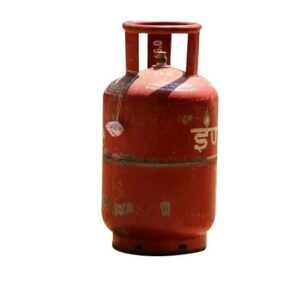
The cylinder blast fire in Chembur also exposes the ancillary risks like a house collapse that can result in bigger casualties than the fire per se. From household kitchens, to crowded hotels, malls, road-side eateries and what have you, LPG cylinders are everywhere – both as advantage and hazard. With Mumbai home to some of the biggest slum pockets in the country, mitigation is tough for the Fire Brigade, civic staff and ambulance services.
The LPG gas cylinder blast and the subsequent fire in Chembur on June 6, 2024 that left over 10 persons injured and a part of the house wall crashed, amply demonstrates how most people are either ill-informed or have a casual approach about the safe use of the devices that come with inherent risks. The fire broke out early in the morning and the presence of combustible items like wooden furniture and other electric appliances placed nearby only made it worse. The fire on the first floor could have easily spread to the floor above but was contained in good time, thanks to the alacrity shown by the Fire Brigade officials, police, civic staff, ambulance service and other agencies when resource mobilisation emerges as the key in mitigation.
Cooking gas, commonly abbreviated as LPG (Liquefied Petrolem Gas), supplied through cylinders or through pipes, come with inherent risks as the danger is 24×7 and more disconcertingly, right inside your house. Besides, LPG cylinders are not just part of households and hotels, they are ubiquitous on street eateries, factories, malls and even professional establishments that have canteens. More often than not, gas cylinders are operated by housewives and people who have little idea about their safe use. It is always a case of all-is-fine-until-a mishap-happens scenario.
LPG cylinders or piped gas are as much an advantage as they can be potential risks. When majority households in Mumbai – with the possible exception of housing societies that have them as mandated by the law — do not have a basic fire extinguisher in case of any eventuality, there is zero possibility of them being present in shanties and slums which are part of Mumbai’s urban landscape. The slums in Dharavi, Mankhurd-Govandi belt, Kurla-Ghatkopar belt, Dindoshi, Bhandup and Mulund, not to speak of scattered pockets spread out across the length and breadth of the metro, means these are constantly sitting on knife’s edge. One can imagine, the havoc a fire can cause should a blast occur in these areas where the literacy rate is abysmally poor.
When the Brihanmumbai Municipal Corporation was in the process of preparing a disaster management plan for Mumbai, it had noted with concern what if a fire broke out in a place like Dharavi where mitigation agencies would not be able to even enter the slum maze, forget controlling it. Thankfully, with the Dharavi redevelopment plan, it might now be possibly easier to negotiate such a disaster. The issue with any fire, whatever the trigger, is not just about loss of lives. It is also about loss of precious property. In the case of Chembur blast, it caused a wall collapse, and if it were to be a load-bearing wall, it might have caused the entire building to come crashing down and the number of casualties would have been alarming. Note the fact that for the authorities, the search operation to rescue those trapped under the debris, was a bigger task than the fire per se. Fire always comes with ancillary risks like panic, stampede and structural collapse(s).
In a startling revelation, 5,122 incidents of accidents involving LPG were reported in the last five years. These statistics came to the fore from an answer during the Lok Sabha questions. It was stated that all reported accidents involving LPG are investigated by public sector marketing companies and after a detailed analysis, possible reasons for the accidents are ascertained. The highest 1,151 such incidents were reported in the year 2017 followed by 1,019 in 2020 and 983 in 2018. The incidents of accidents involving LPG reduced to 825 and returned further to 606 in 2021 and 538 in 2022 (till January 2023).
The LPG distributors were instructed by public sector oil marketing companies to release LPG connections after satisfying and meeting all the safety norms for installation of LPG connections. 793 claims were settled in 2019-20 and Rs 24.09 were paid against the settled claims, 815 claims were settled in 2020-21, and Rs 19.63 crore paid to affected families. In 2021-22, 489 claims were settled and Rs 16.60 crore amounts were paid. In 2022-23 (April-2022-January 2023), Rs 7.30 crore were paid against the 187 settled claims. These are tell-tale figures.
Gas explosions in houses are often triggered by gas leaks resulting from incorrectly installed or faulty appliances, damaged fuel lines, mishandled cylinders, and improper propane disposal or storage. LPG cylinder can blast if it is continuously exposed to immense heat or fire. Add to the fact that this year, the country witnessed an unprecedented heat wave that also caused air conditioners to explode and cause fires. It’s almost impossible to have LPG blast on its own without related factors. Firstly, a gas leak from the high-pressure cylinder or regulator gets mixed with air, forming a combustible mixture. To complete the fire triangle, we need a spark or a source of ignition.
An instant and swift explosion of these cylinders can result in serious burn injuries. Natural gas explodes at a concentration between 5 to 15 percent in air. Ignition is generally caused by matches or candles, fires, sparking switches etc. This spark ignites the combustible LPG-air mixture and this leads to an explosion. Such explosions normally take place during the odd hours when people are not alert, like right after getting out of bed when one uses electrical appliances or uses the gas lighter.
Prevention is always better than cure. It’s imperative to follow safety measures while handling LPG cylinders. It’s mostly negligent and careless handling that leads to cooking gas cylinder explosion. Embracing these effective safety measures will help in avoiding such accidents. The ideal place to store a gas cylinder is in a well-ventilated space away from direct sunlight. Due to the nature of the substances within, it is important to keep the cylinder away from sources of heat, flammable substances, electric sockets or spaces where you receive transmission from the TV etc.
ESSENTIAL SAFEGUARDS
– Never keep the gas knob open. Regulator knob should be off when not in use.
– Never store flammable and plastics and other junk near the LPG cylinder.
– Safety of electrical appliances nearby.
– Kitchen/cooking area should be well ventilated.
– Rubber tubes and regulators should be ISI-approved
– Always procure LPG cylinders from authorized franchisees.
– Do not allow children to operate stoves/burners run on LPG cylinders
– Keep a fire extinguisher and know its use.

A Column By
Raju Korti – Editor
The Resource 24X7
A Journalist With 4 Decades of Experience With Leading Media Houses.
